

Designation:CER-11 Dryad Tactical Corps Forest Division Combat Engineering Robot |
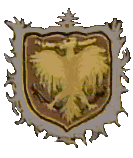
|
||||
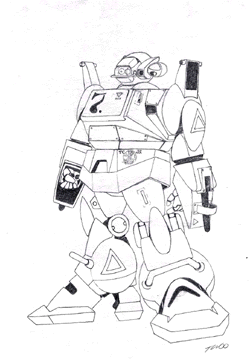
|
|||||
| Mk. I | Mk. II / IIJ | |
|---|---|---|
| Total Height: | 5.4 m | 5.4 m |
| Total Depth: | 2.2 m | 2.4 m |
| Total Breadth: | 2.6 m | 2.7 m |
| Weight: | 8.3 metric tons | 9.9 metric tons |
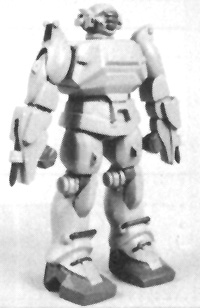
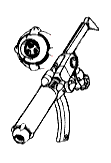
Common optional pods for used by the hands:
|

|
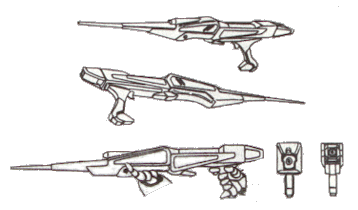
|
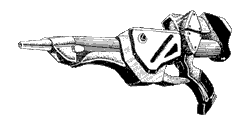
|
|
The armor on the Mk. II and IIJ Dryad is a new development in low-mass composite-materials Chobham plating that became the standard for all Terran mecha after its application to the VQ-6A Vandal. Aside from the respectable protection provided against projectiles, missiles, and other kinetic weapons, this armor is also resistant to plasma globes (annihilation discs), lasers, and to a lesser extent, particle guns, owing to the fact that the armor can flake off and evaporate in layers under fire from such high-energy weapons, taking much of the weapon's energy and converting it into the latent heat of sublimation in the armor. The armor on the Mk. II and IIJ stops all small arms and heavy infantry weapons fire, provides good resistance to light mecha-mounted weaponry, such as the Zentraedi 22.3mm HE autocannon round, and poor to fair resistance to medium mecha-mounted weaponry, such as the Valkyrie's 55mm APFSDS round. The armor on the original production Mk. I was made up of a light weight aluminum alloy with some ceramic composite inserts and would only stop small arms fire up to 7.62mm rounds. Anything heavier, such as 12.7mm AP, have no problem penetrating.
The Dryad provides full protection from nuclear, biological, and chemical hazards, using a fully-sealed cockpit module activated by radiation and hazardous chemical sensors, or manually when biological warfare conditions are anticipated. The cockpit module is also armored and gives the Dryad the option of operating off-planet on the moon and on Mars. The internal consumables supplies can provide atmosphere purification for one week maximum on Earth and 48 hours in a hostile environment such as the moon or Mars.
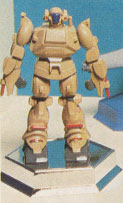
Originally developed as a joint venture between the defense contractor Teledyne Continental and the commercial construction equipment producer Caterpillar, the Dryad was first known as the HCCER 2012 (Heavy Construction/Civil Engineering Robot). The design intent was to create a civilian market labor robot to assist in the rebuilding of human civilization after the Zentraedi Holocaust. It's smaller size and lack of sophisticated sub-systems meant it was relatively cheap to produce, only one-tenth the price of a Spartan main battle/engineering robot. However, two things conspired against it to keep it from being a commercial success. First, it was protoculture-powered, so only government construction agencies were allowed by law to own and operate it. Second, with all the full sized Zentaedi then on Earth it was hard to justify investing millions in a new machine when you could hire the Zentraedi to do the same work for a fraction of the price. It was not till much later, after most Zentraedi had been micronised and the laws relaxed, that Caterpillar sold any on the civilian market.
The CER-11 Mk. I was nothing more than a HCCER 2012 with an upgraded sensor suite and sealable cockpit module. It was adopted pretty much as is by the ASC in 2013 as a combat engineering robot. The biggest shortcoming of the Mk. I was that it had no armor, being built of light weight materials to save costs. A 12.7mm AP round had little problem piercing its thin skin. This is to say nothing of the effect of an RPG round. As such, many of these early Dryads were brought down by lightly armed bandits and rogue humans. It was also highly vulnerable to mines. The first real combat engineering robot was the Mk. II, which added real armor, improved sensors and integral head lasers. It also had the ability to use the new gun pods then being developed by the ASC.
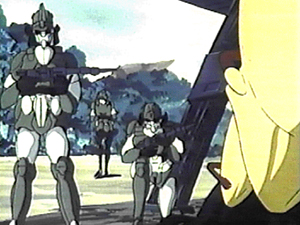
The small size of the CER-11 set the trend for all future destroids and battloids to come. The lighter weight meant it was cheaper, easier to transport, and could go places the old destroids could not. It was also found that the destroids rarely encountered situations where they went into actual hand to hand combat, so this too was of little concern. The Dryad has several features unique to its role as a combat engineering robot. Carabeaners points are located on the shoulders, torso and legs. These can be used for anything from clearing logs and obstacles, to climbing downed Zentraedi warships. The forearms were designed with multi-use attachment points. Plasma cutters or conventional torches; grappling hooks which could be launched to climb shear faces or recover damaged armored vehicles from soft ground areas, mine fields or other danger zones; or 12.7mm M2 machine guns could be mounted. The Dryad also has over-sized feet for dealing with soft and/or marshy terrain.
The majority of the Dryads built between 2013 and 2022 found themselves in the ASC TC Forest Division, serving in the Zentraedi Control Zone and other uncontrolled jungle areas. Limited numbers were also assigned to RDF units and other ASC Tactical Corps. Originally, it served only as a combat engineering battloid, but due to lack of armored units in the South American theatre, it was soon pressed into service as an infantry support robot and the addition of the GU-13 gunpod. In this capacity it was found to be woefully inadaquite. The Mk. II improved this and with the introduction of jump jets brought the Dryad into it's own. These rockets turned what was once a humble civil engineering robot into a somewhat capable infantry support battloid. Later on, during the Invid occupation, a few lasted on to serve well with resistance fighters. By the end of the Third Robotech War, all but a very few Dryads had been used up and worn out.
See additional design notes.
Return to Southern Cross Mecha Index.
Go to Robotech Reference Guide Home Page.
Robotech (R) is the property of Harmony Gold. This document is in no way intended to infringe upon their rights.
Content by Tim Wing and Rob Morgenstern, with Pieter Thomassen